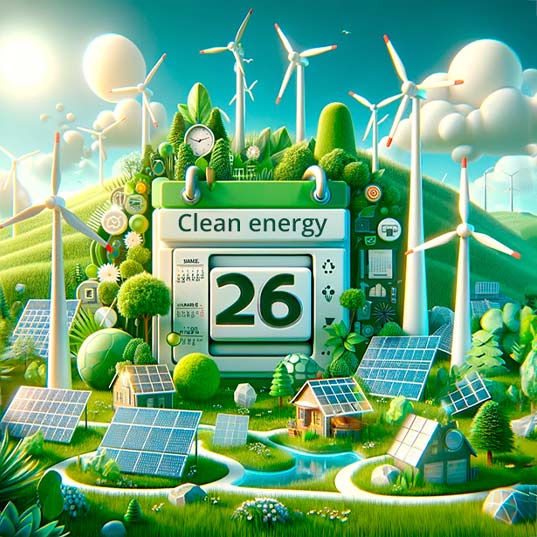World Day to Combat Desertification and Drought 2024: Our Legacy and Our Future
What kind of land will we leave for future generations? The World Day to Combat Desertification and Drought urges us to reflect on land degradation and its social and environmental impacts.
The was not always the vast, dusty desert we know today. Around 5,000 to 10,000 years ago, it was green and fertile, home to species like giraffes, crocodiles, elephants, and hippopotamuses. Fossils and rock art found in the area confirm this. These species no longer exist in the current desert expanse of almost 9.5 million square kilometers.
The Sahara's transformation reminds us not to take our ecosystems' stability for granted, especially amidst the ongoing climate change. World Day to Combat Desertification and Drought 2024 calls us to reflect on the importance of combating desertification and protecting our natural resources to ensure a sustainable future for all.
What will I read in this article?
- World Day to Combat Desertification and Drought 2024
- The impact of desertification
- Measures to combat desertification
World Day to Combat Desertification and Drought 2024
 It has been more than three decades since desertification became recognized as one of humanity’s greatest challenges. In response, the UN General Assembly established the United Nations Convention to Combat Desertification (UNCCD) in 1994, one of the three global treaties known as the Rio Conventions, alongside those on climate and biodiversity.
It has been more than three decades since desertification became recognized as one of humanity’s greatest challenges. In response, the UN General Assembly established the United Nations Convention to Combat Desertification (UNCCD) in 1994, one of the three global treaties known as the Rio Conventions, alongside those on climate and biodiversity.
At that same summit, June 17 was declared “World Day to Combat Desertification and Drought” to raise awareness of this problem. Three decades later, the theme for 2024, “United for Land. Our Legacy. Our Future,” emphasizes the importance of land stewardship, our most precious resource, to ensure the stability and prosperity of billions of people around the world.
Because if the Sahara was once green, what is fertile land today may soon become a vast expanse of sand. Climate change is driving deserts to latitudes where they were not present before, and countries , close to the Sahara’s borders, are already at high risk of desertification.
The impact of desertification on nature and populations
Desertification is a global problem with serious repercussions for biodiversity, ecosystem security, socioeconomic stability, and sustainable development.
But what exactly is desertification? It is a phenomenon caused by climatic variations and human activities that turn fertile areas into dry areas. The following video explains it in detail:
According to the UNCCD, land degradation affects up to 40% of the world’s land surface, resulting in the loss of 100 million hectares of healthy land each year—an area the size of Egypt. Droughts have increased by 29% since 2000, driven by climate change and poor land management.
Measures to combat desertification
Despite the magnitude of the problem, there are multiple measures that can be taken to reduce desertification:
- Reforestation and regeneration of tree species: Planting trees helps to stabilize the soil and recover vegetation cover.
- Improved water management: This includes water saving, reuse of treated water, rainwater storage, desalination, and, in specific cases, seawater irrigation for halophilic plants.
- Ground maintenance: Use of fences to slow the advance of dunes and tree barriers to protect against wind erosion.
- Soil enrichment: Fertilization through canopy regeneration.
- Development of shoots of native species: Selective pruning and the use of pruning residues as fertilizer help increase the soil’s water retention capacity.
Additionally, the UNCCD notes that investing in land restoration can generate significant economic returns, with up to $30 of benefits for every $1 invested. Engaging youth in food system transformation and land restoration can help create the 600 million jobs needed by 2030.
With these strategies and increased global awareness, we can move towards a future where desertification is no longer a looming threat, ensuring the stability and prosperity of millions of people worldwide.
Source:







